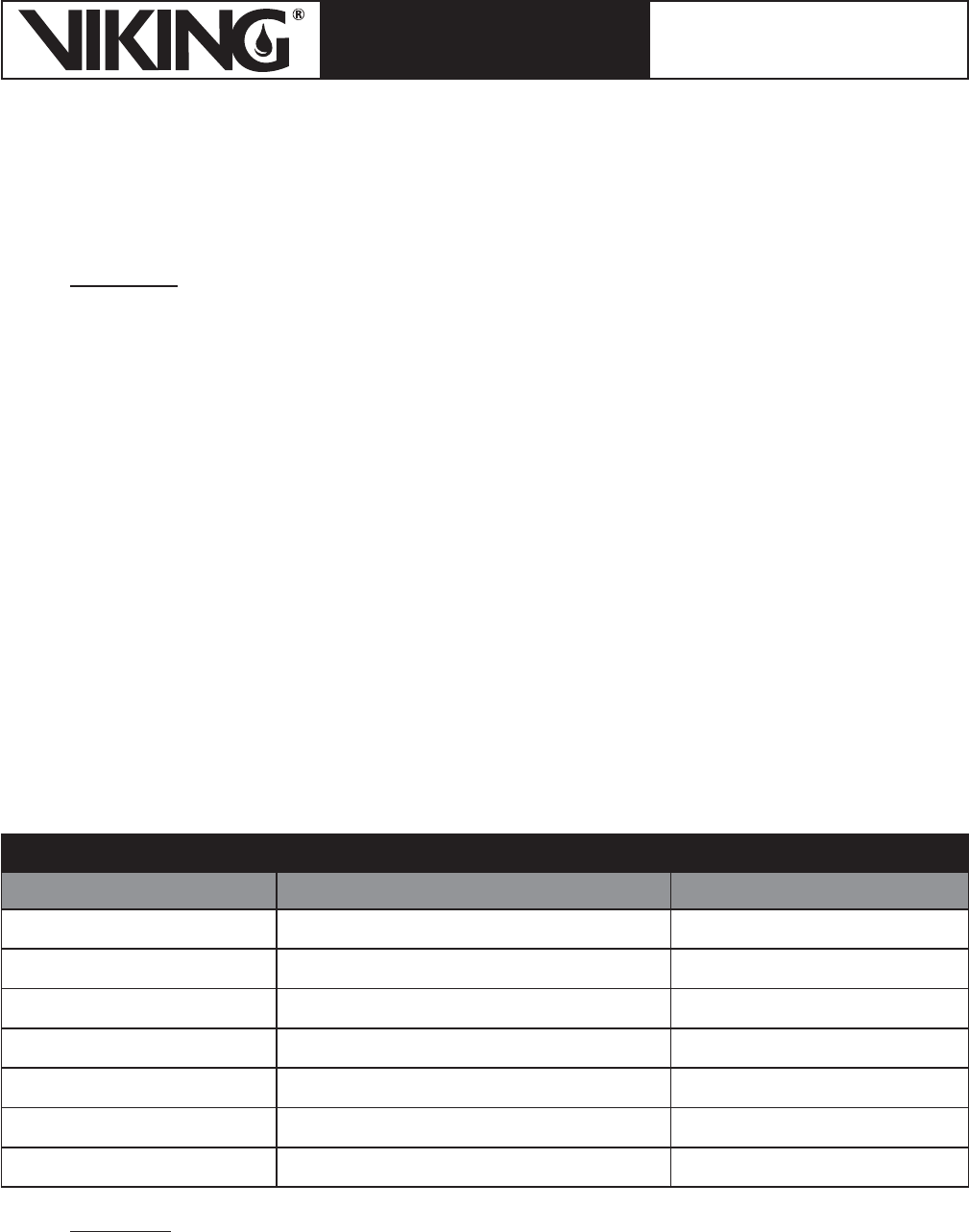Technical data

Page 41
TECHNICAL DATA
The Viking Corporation, 210 N Industrial Park Drive, Hastings MI 49058
Telephone: 269-945-9501 Technical Services: 877-384-5464 Fax: 269-818-1680 Email: techsvcs@vikingcorp.com
February, 2010
PREACTION SPRINKLER
SYSTEM
III. SYSTEM REQUIREMENTS
Section 7.3 of NFPA 13† provides the installation rules and characteristics that are unique to preaction sys-
tems. Also, refer to NFPA 72 National Fire Alarm Code for specific requirements on the design of electrical
detection systems.
System Size
For single and non-interlock preaction systems, no more than 1,000 automatic sprinklers shall be control-
led by any one deluge valve per section 7.3.2.2 of NFPA 13†.
For double interlock systems, system size is determined by ONE of the following, per section 7.3.2.3 of NFPA 13†:
1. The system shall be designed to deliver water to the system test connection in no more than 60
seconds, starting at the normal air pressure on the system, with the detection system activated
and the inspection test connection fully opened simultaneously.
2. System size shall be based on calculating water delivery based on hazard, in accordance with sec-
tion 7.2.3.6 of NFPA 13† (same as for dry systems), anticipating that the detection system activa-
tion and sprinkler operation will be simultaneous. NOTE: Fires in higher hazard materials produce
higher heat release rates are expected to activate a greater number of sprinklers, as reflected in
the table. A larger number of open sprinklers results in water moving faster from the deluge valve
and piping to the open sprinklers.
NFPA 13 requires any calculation program and method to be listed by a nationally recognized
testing laboratory. System is to be sized so that initial water discharge at the system test valve or
manifold outlet is not more than those in Table 1, starting at normal air pressure on the system and
at the time of fully opened test connection.
3. System size shall be designed to deliver water to the system test connection in no more than 60
seconds, starting at the normal air pressure on the system, with the detection system activated
and the inspection test connection, arranged to comply with Table 1, opened simultaneously.
NFPA 13 permits a listed quick-opening device to be used to help meet the above requirements.
†NFPA 13-2007 edition.
Supervision
Single interlock preaction systems have a minimum pressure requirement of 7 PSI (0.5 bar) per NFPA 13,
while non-interlock and double interlock preaction systems are required to maintain a minimum supervising
air pressure as follows:
1. For Viking non-interlock preaction systems and double interlock preaction systems with pneumatic/
pneumatic release or electric/pneumatic release: Provide 30 PSI (2.1 bar) pneumatic pressure to
the pneumatic release system (or sprinkler system) and pneumatic actuator for system water pres-
sures of 175 PSI (12 bar) or less. For system water pressures above 175 PSI, up to a maximum
of 250 PSI (17 bar), provide 50 PSI (3.4 bar) pneumatic pressure to the pneumatic release system
(or sprinkler system) and pneumatic actuator.
TABLE 1: SYSTEM WATER DELIVERY
Hazard Number of Most Remote Sprinklers Initially Open Maximum Time of Water Delivery
Residential 1 15 seconds
Light 1 60 seconds
Ordinary I 2 50 seconds
Ordinary II 2 50 seconds
Extra I 4 45 seconds
Extra II 4 45 seconds
High Piled 4 40 seconds










